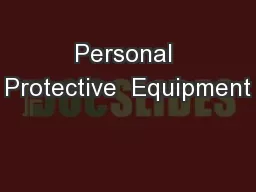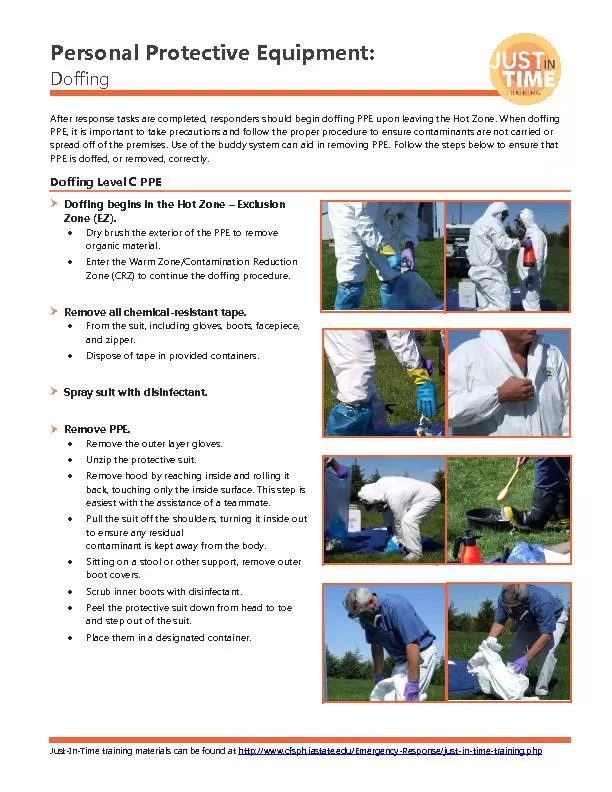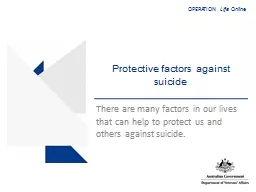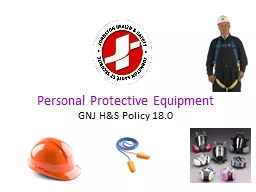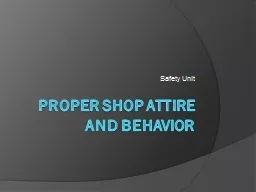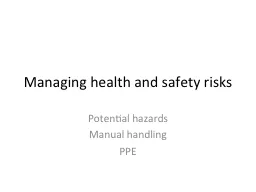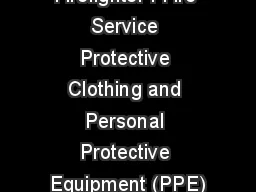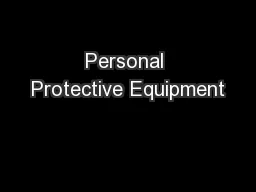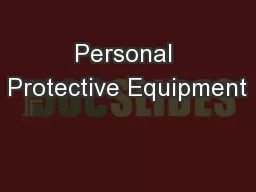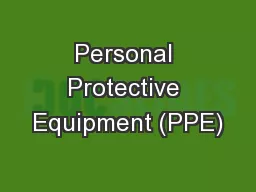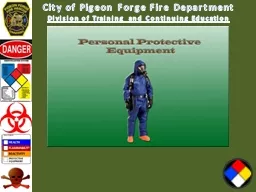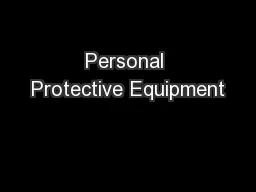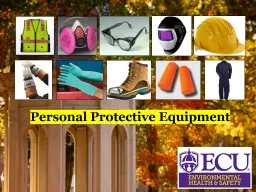PPT-Personal Protective Equipment
Author : pasty-toler | Published Date : 2018-09-17
Protecting Employees from Workplace Hazards Employers must protect employees from hazards such as falling objects harmful substances and noise exposures that can
Presentation Embed Code
Download Presentation
Download Presentation The PPT/PDF document "Personal Protective Equipment" is the property of its rightful owner. Permission is granted to download and print the materials on this website for personal, non-commercial use only, and to display it on your personal computer provided you do not modify the materials and that you retain all copyright notices contained in the materials. By downloading content from our website, you accept the terms of this agreement.
Personal Protective Equipment: Transcript
Protecting Employees from Workplace Hazards Employers must protect employees from hazards such as falling objects harmful substances and noise exposures that can cause injury Employers must Use all feasible engineering and work practice controls to eliminate and reduce hazards . Just - In - http://www.cfsph.iastate.edu/Emergency - Response/just - in - time - training.php Personal Protective Equipment : Do nning Personal Protective Equipment (PPE) is crucial to maintaining th Just - In - http://www.cfsph.iastate.edu/Emergency - Resp onse/just - in - time - training.php Personal Protective Equipment : Do ff ing After response tasks are completed, responders should begin do There are many factors in our lives that can help to protect us and others against suicide.. Protective factors against suicide. The factors that can lead someone to suicide can be complex and often involve a mixture of causal and circumstantial risk factors. . GNJ H&S Policy 18.0. Personal Protective Equipment . (GNJ H&S Policy 18.0). Personal Protective Equipment (PPE) is used as a supplementary/last defense to:. prevent exposure or . Interim/supplementary protection to minimize exposure/ contact to injurious agents at work. Safety Unit. Farm and Shop . Accidents. 2% Poisoning. 12% Drowning. 44% Farm Machinery. 9% Hit By Objects. 7% Electrical Current. 5% Falls. 6% Firearms. 4% Animals. 2% Burns. 9% All others. OSHA. OSHA- Occupational Safety and Health Administration. Potential hazards. Manual handling. PPE. Author: . Margaret Bates, The University . of. Northampton. Hazards. Falling Objects or Projectiles. Sharp Objects. Slips, Trips & Falls. Sprains and Strains while lifting. 2. Copyright and Terms of Service. Copyright © Texas Education Agency, 2011. These materials are copyrighted © and trademarked ™ as the property of the Texas Education Agency (TEA) and may not be reproduced without the express written permission of TEA, except under the following conditions:. Types and Levels. Adapted from the FAD . PReP. /NAHEMS . Guidelines: Personal Protective Equipment (2011). Types of PPE. USDA APHIS and CFSPH. FAD PReP/NAHEMS Guidelines: Personal Protective Equipment - Types and Levels. 1. Adapted from: . OSHA 3151-12R2003 Personal Protective Equipment document. 2. Upon completion of this unit the participants will be able to identify the need for Personal Protective Equipment on Wisconsin Dairy Farms. . Did You Know. "The Bureau of Labor Statistics estimates that approximately 3.3 million serious work-related injuries and about 4,300 fatalities . occur annually.. OSHA's . incident data indicate that a significant portion of all work related injuries and fatalities involve workers being struck in the eyes, head, face, hand, and or feet by foreign objects. For example, it has been estimated that as many as 2,500 eye injuries occur in the workplace every working day. Personal Protective Equipment. Personnel must be protected from the hazards at the scene. OSHA 29 CFR 1910.132 . Personal Protective Equipment. OSHA 29 CFR 1910.134 . Respiratory Protection. NFPA 472 . Types and Levels. Adapted from the FAD . PReP. /NAHEMS . Guidelines: Personal Protective Equipment (2011). Types of PPE. USDA APHIS and CFSPH. FAD PReP/NAHEMS Guidelines: Personal Protective Equipment - Types and Levels. Personal Protective Equipment Personal Protective Equipment (PPE) is any safety equipment that is worn to prevent injury in the workplace, when engineering and administrative controls are not feasible or are being implemented. Personal Protective Equipment Construction Industry – Subpart E 29 CFR 1926.95 - 1926.106 Presented by : ETTA, OSH Division, 919-707-2875 Objectives After this course, students will: Understand general provisions of the standard
Download Document
Here is the link to download the presentation.
"Personal Protective Equipment"The content belongs to its owner. You may download and print it for personal use, without modification, and keep all copyright notices. By downloading, you agree to these terms.
Related Documents

